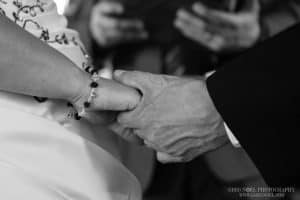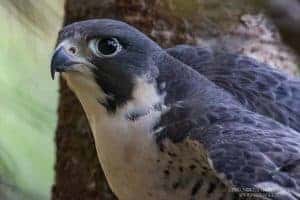How to Take Sharp Photos in Low Light

Taking photos in low light presents a number of challenges for our cameras. The camera’s sensor needs light to create an image, and the less light there is, the more challenging it is to create a photo. Auto modes on your camera are programmed to ensure enough light hits the sensor to create a balanced exposure. To achieve this, the camera will most likely shoot at a slower shutter speed to allow more light to hit the sensor. This can cause blurry images. So I’m going to give you a few tips to help you take the sharpest possible images in low light.
Before reading this article you should have some understanding of the exposure triangle and its impact on an image. If you are unfamiliar with the exposure triangle and how shutter speed, aperture, and ISO affect the exposure then check out Jim Harmer’s article on photography basics.
Motion Blur

The most likely culprit for blurry photos in low light situations is motion blur. This happens when the camera’s shutter is open long enough that any movement by the subject or the photographer is captured by the sensor and causes blurry images. This can occur in two ways: either the subject moves too much while the shutter is open or the camera moves too much while the shutter is open. Throughout the article, I will address how to prevent both from happening while you take your pictures.
That said, motion blur isn’t always a bad thing and it is often used to show speed, action, or movement of a subject. For example, if shooting someone playing guitar, a slight blur of the hand shows the motion of playing and tells more of a story than a hand that doesn’t show the blur. But when you were expecting a nice sharp picture, and it comes out blurry, it’s disappointing and impossible to fix in post processing. So if you want sharp images in low light then you need to get it right in camera.
Here are a few ways to help reduce motion blur in low light situations.
- Shoot in Manual Mode
- As mentioned above, when shooting in auto mode the camera will control the shutter speed, aperture and ISO to create a balanced exposure. The camera doesn’t know if the photo will be blurry because of motion or shaking. Therefore to get the sharpest possible images you need to take control of the camera's features.
- You could do so using Aperture Priority mode or Shutter Priority mode but I prefer to use full Manual mode to give me the most control. As you will see shortly to maximize sharpness in low light you, will need to control the aperture, shutter-speed, and ISO.
- Adjust the shutter speed for moving subjects
- If you take a picture in low light you need to make sure that enough light hits the sensor to create a proper exposure. Therefore, there is a fine line between a too fast shutter speed which will freeze the motion but create an underexposed photo, and a slower shutter speed that will create too much blur. Take control of your shutter speed by either shooting in Shutter Priority mode or Manual mode.
- What is the best shutter speed to use in low light?
- That depends on the situation and focal length. Longer focal lengths need extra consideration which I’ll tackle the focal length a little later in the camera shake section.
- For shutter speeds at focal lengths under 85mm, where you are hand-holding and taking pictures of static subjects, semi-static people, such as those sitting around a table, or standing and posing, I generally try to stay at least 1/60s but prefer 1/120s. Anywhere in that range will usually give sharp images in that situation.
- If the people are moving faster, running, dancing, or even laughing and shaking then you need to speed up the shutter more, I find 1/200s to 1/400s may be needed depending on how fast people are moving.
- Open the aperture
- The next thing I do after I have reached the limit of how slow I can bring my shutter and still freeze motion, but the image is still underexposed, is to open the aperture on my lens. Opening the aperture on the lens lets in more light to increase the exposure. A single stop difference in aperture doubles the amount of light entering the camera. For example, shooting at f2.8 will allow in twice as much light as f/4. So I will widen the aperture as much as possible in most low light situations.
- Sometimes if it’s even a little dark, I will start at the widest aperture even before the shutter speed because I know that’s where I will most likely end up eventually.
- Raise the ISO
- If you have your aperture open as wide as possible, or as wide as you can go before the depth of field becomes too narrow and part of your scene is out of focus, then you should increase the ISO.
- Increasing the ISO will, of course, add noise to the image, but most modern cameras can shoot at ISO 1600 or higher and the noise levels are still pretty acceptable. Plus, a bit of noise in an image is better than a blurry image because the shutter was too slow. So don’t be afraid to increase the ISO on your camera if it will mean stopping motion blur.
- As an example, I often find when shooting events in dimly lit environments I am usually shooting at around 1/100s, f/2.8 and ISO 1600 or 3200. In this situation I have found that and slower than 1/100s and people start to blur, f/2.8 is as wide as my 24-70mm f/2.8 lens will go, so then I increase the ISO to 1600 or ISO 3200 to get the balanced exposure.

Camera Shake
The other common cause of blurry photos in low light is camera shake while the shutter is open. As hard are you try to keep the camera perfectly still while shooting handheld it is very difficult to keep the camera in the exact same position in low light because you are usually shooting with slower shutter speeds. You will notice this more if you are shooting still subjects handheld or at longer focal lengths because the more you are zoomed in the more small movements are registered by the sensor. At very long focal lengths, even pressing the shutter can cause some blurriness in your image. So how do you keep the camera from shaking while taking a picture?
The first thing you should learn is how to hold a camera properly. Proper hand holding technique can make a huge difference in reducing motion blur in dim light. If you want to learn how to properly hold a camera to reduce camera shake then check out this article that out lines exactly how to hold your camera.
Sometimes, even the most stable person with perfect hand holding technique will still experience situations where they can’t hold the camera perfectly still during the duration of the exposure. So here are a few tips to help reduce the camera shake even more:
- Use a monopod or tripod from Amazon. You can also check out this really cool monopod with a tripod base on Amazon.
- Brace yourself or the camera against a solid object such as a wall, pole, or tree.
- Lay your elbows or camera on a solid surface such as a table, shelf, or the ground.
- If using a tripod also use a shutter release cable and mirror lock up mode.
- With longer focal length you should use the reciprocal rule for your shutter speed. That means keep your shutter speed faster than 1/(focal length) so if you are shooting at 200mm then keep the shutter speed at 1/200s
- Use your lens’s image stabilization feature. Most image stabilization features allow you to get 3-4 stops slower shutter speeds than the reciprocal rule mentioned previously. So a 200mm lens with image stabilization should be able to capture a sharp image at 1/60s when the feature is turned on rather than 1/200s if you shoot without image stabilization. Just a note, if the camera is on a tripod, turn off the image stabilization as this may cause blurry images.
What about flash?

The first instinct for most people in low light situations is to just use a flash to add more light, after all, most cameras come with a flash and you can buy speed-lights for relatively cheap. So why not just use flash?
Flash is great and can work great for adding light to a scene, and it can also help to freeze motion, this will mean you can shoot at faster shutter speeds, smaller apertures, and lower ISO. So it makes sense to always use flash right? Well not always. Here are a few reasons not to use flash:
- Flash may not be allowed in the location, many venues such as churches, museums, sporting arenas do not allow the use of flash
- Flash is distracting to other people in the area
- If there are multiple people taking photos then flash can ruin another person’s exposure, so please be considerate to other photographers.
- Direct, on-camera flash doesn’t create flattering, natural looking light on the subject
- Flash can wash out the ambient light of the environment
- If photographing wildlife, a flash may scare the animal away or harm their vision, this is especially true for owls and other nocturnal animals
All that said flash isn’t always a bad thing, and sometimes it might even be required. I recently shot an event and they turned off all the lights, it was almost completely dark in the room, so flash was needed and there was no way around it. In addition to adding light, using a flash properly can really enhance a scene and create some great moods. So I wouldn’t rule it out completely but use it sparingly, only when needed or for a specific purpose.
If you want to use a flash I recommend using a speed-light instead of the camera’s on-body flash, and also if possible use the flash off camera, or bouncing the flash off a ceiling or wall for the most flattering light. If you want to deepen your knowledge of flash photography, check out our complete tutorial: Flash Photography Basics
If you don’t know what speed-light to start with, a great light to use is the YN-560 IV flash from Amazon. Plus we have a great article on how to use it: New YN-560 Flash? Now What? 3 Skills to Learn First
Missed focus

Once you have mastered keeping motion blur to a minimum, there is one other factor that causes a lot of blurry photos in low light, missed focus. Your camera's autofocus system needs a certain amount of light to pass through the lens in order to focus properly. You have probably experienced a camera struggling to lock focus in low light in the past, the lens keeps trying to focus or is slower to focus than it normally is in good light. In those situations, it will even miss focus slightly so you images are a little blurry.
A photo that missed focus is impossible to fix in post processing so you want to ensure you nail the focus before pressing the shutter. A newer camera will often have a better autofocus system than older cameras, even a few years can make a difference in this technology, but even new cameras can still struggle to focus in low light. The following are a few tips to make sure you nail focus more in low light:
- Use the camera's viewfinder autofocus not live view
- Without getting into specifics on how phase detection focus systems work, in general camera’s live-view mode uses a different focus process than the one you use through the viewfinder. The focus system inside the viewfinder is more accurate and faster than the one in live view so you will get more accurate and faster focus but using the viewfinder.
- Use the center focus point
- Most cameras now have more than one focus point so you can move your focus point around the viewfinder, the center focus point is the most accurate and if you are having trouble locking focus using a point off center, try moving the point back to the center to see if that helps. If it does then use focus and recompose method to take you photos.
- Use the cameras build in focus illuminator
- Some cameras come with a built-in focus illuminator; a small light that brightens a scene to allow the camera to get better focus. Enabling this feature on your camera will help the camera lock focus. But the built in focus illuminator does have some limitations, it can be distracting if you are trying to capture a candid moment it will often cause the people to look in your direction. People mistake it for a flash so they move as soon as it turns off, which is while the camera is taking the photo. The illuminator is also limited to about 10 feet of if you are using a longer focal length and a small distance from the subject it won’t work as well
- Use fast, fixed-aperture lenses
- As a camera's autofocus system needs light coming through the lens to work, the more light that comes through the lens the better it will work and the more accurate it will be. Using a lens with a f/1.8 or f/2.8 fixed aperture will allow more light through the lens than a variable aperture kit lens. For example, a 50mm f/1.8 lens will let 10 times more light through the lens while the camera is focusing than an 18-55mm f3.5-5.6 lens at 50mm (3 and 1/3 f-stops difference). This can make a huge difference to the autofocus system.
- If all you have is a variable aperture lens such as the 18-55mm f/3.5-4.6 then using it at its widest focal length will allow the camera to focus at the widest available aperture f/3.5. As you zoom in, the aperture is forced to close, restricting the light that enters the lens. Shooting at the widest focal length will let more light through the lens and will make the focus system more accurate than shooting zoomed in, so if possible get closer to your subject.
- Use a speed-light with an autofocus assist beam.
- Some speed-lights such as the Nikon SB-700 or the Canon 430EX III-RT on Amazon have a really helpful feature called AF assist where they project a red beam toward the subject to help the autofocus system. This auto-focus beam can even be used without using the flash, so if you just want to use the beam to help the auto-focus without the flash firing you can.
- The advantage of using the speed lights auto-focus assist beam is that it isn’t as distracting as the cameras build in illuminator and it can reach subjects further than 10 feet. So using it with a 200mm lens is great.
- Manual focus static subjects
- If you are shooting a static subject and using a tripod you can easily manually focus using live view and zooming in on the subject on the preview screen to make sure you have the subject in focus. I often do this when shooting moonlight landscapes or astrophotography. You could even shine a flashlight or laser pointer on the subject while you focus this way to make it even easier.

Summary
Shooting in low light doesn’t have to mean you accept that you images will be blurry. By using a number of available techniques and strategies you can ensure that your images are sharp, and in focus even in the darkest of environments. Learn to shoot in manual, control all of your camera settings, especially the shutter speed and you will reduce the motion blur that is so prevalent in low light images. After that ensure that the camera is able to autofocus well in the darkest environment and you will be enjoying sharp low light images from now on. Happy shooting.
Disclaimer: Improve Photography is a participant in the Amazon Services LLC Associates Program, an affiliate advertising program designed to provide a means for sites to earn advertising fees by advertising and linking to Amazon.com

Hi Greg, Thanks for all the information. Please reply on this question: What is the reason for shutting off image stabilization when the camera is tripod mounted?
Image stabilization (IS/VR) works by moving elements inside the lens to counteract the shaking of the camera. Basically, one of the pieces of glass inside the lens moves around. In many lenses, while IS/VR is turned on these elements still continue to move when the camera is placed on a tripod. So you end up with a stable camera, but a part of the lens is still moving or shaking, which can cause slightly blurry photos. So it’s best to turn off IS/VR when your camera is stable. To see the effect for yourself, put your camera on a tripod, turn on the VR and record a short video, you will likely see the edges of the frame moving or shaking when you watch it.
Nice article, Greg. Hopefully a lot of newer photographers will read this and get better results.
Thanks Jim, That is the goal.
I read it and I love it. Thank you GregNoel for such a wonderful article. I really appreciate that!
You’re very welcome. I’m glad you got something out of it. Cheers.
Is there any way to change the focus point in post processing? Does any camera come with that feature? Thank you
For most cameras no it is not possible to change the focus point in post processing. There is a camera company called Lytro which claims to have this feature but I haven’t used it so I can not comment on how well the feature works.
Great article , we are just starting out in photography so it’s been a learn on the fly thing . But this article really will correct a lot of our low light events! Thanks a lot!
Thanks for sharing, very useful.
My smartphone has DSLR fetures, and I try to shoot in low light environment.
Hi Greg, I have an Sony Alpha 7 MK1. I have been trying to photograph an object moving at 30 mph in poor light. I am only a few feet from the object. I have been using a shutter speed of 1600 on F4. (I can’t go lower) but on Auto the cameras chosen settings are F4 1/100. (I’m shooting on SP) Needless to say the results are grainey. I can’t use flash. I could buy a better lense F3.5. Lighting is beyond my control. Any suggestions would be welcome. I am going to try single point focus and change the ISO (as per your article) thanks.